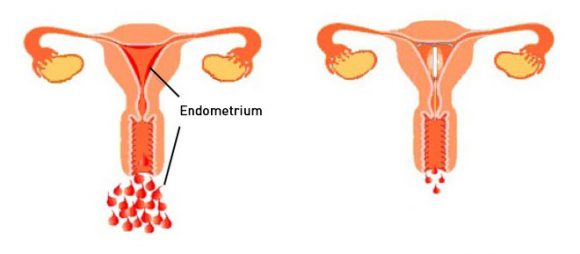Within the first 3 to 6 months after placement of the hormonal IUD, the uterine lining stops building up during the cycle. During this phase, light bleeding or even prolonged bleeding may occur. This is medically safe and usually disappears within a few months. Your body simply needs a certain adjustment period. As soon as your uterus adapts to the hormonal IUD, the bleeding becomes lighter and shorter, or stops completely. Very rarely, an unusually heavy and prolonged bleeding may occur after the insertion of a hormonal IUD. If this occurs, you should consult your doctor to clarify the cause. You may want to record a timeline of your periods before and after insertion of the IUD, to help you and your doctor understand the changes in bleeding patterns.
After the first year of use, about one in five women using a hormonal IUD is completely period-free.
The bleeding that occurs with a hormonal IUD in place is normal. It is an effect of the progesterone hormone on the uterine lining, and not a sign of pregnancy. You can take a pregnancy test just to be sure, but it’s not necessary to repeat it. According to the Pearl Index (0.1 to 0.2,, www.gynmed.at) the hormonal IUD is one of the most effective methods of contraception. Only if you experience additional signs of pregnancy, such as nausea and vomiting, should you consult your doctor immediately.
Here is a comparison of the average heaviness of a period without and with a hormonal IUD:

 You can also go period-free with the hormonal IUD:
You can also go period-free with the hormonal IUD: Why Menstruation?
Why Menstruation? 